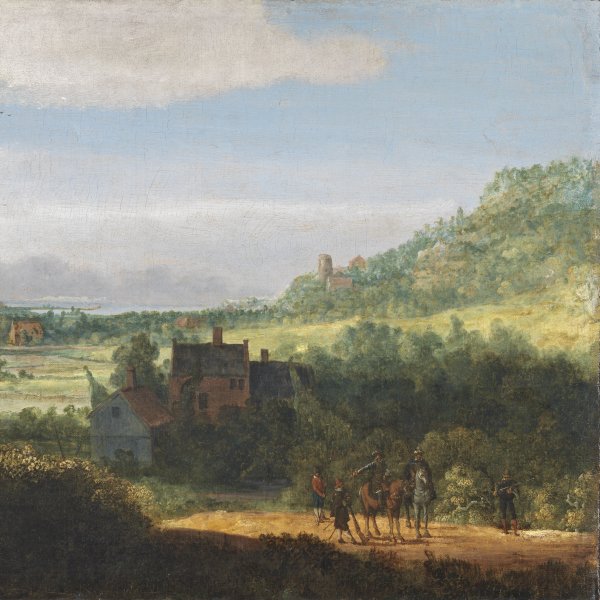Hercules Pietersz. Segers
Haarlem, 1589/90 -La Haya (?), 1633/38
Segers was a Dutch landscape painter and printmaker whose biography is not easy to reconstruct given the scant amount of available information. Only eleven works by the artist have survived and none are dated which has made the chronology of his oeuvre difficult to establish.
Son of Pieters Segers, a textile dealer from Haarlem, Hercules Segers was brought up in the Mennonite religion. His date of birth has been deduced from a series of documents. It is known that following the Spanish occupation in 1596, the family fled from Haarlem for religious reasons and moved to Amsterdam. In 1606 the artist was in the studio of the painter Gills van Coninxloo, through whom he became familiar with the work of the landscape painters Joos de Momper, Paul Bril and Pieter Bruegel the Elder.
In 1612 Segers returned to Haarlem where he registered in the guild of Saint Luke. Two years later he assumed custody of his illegitimate daughter Nelletje. The following year, in 1615, Segers married Anneken van der Brugghen who was sixteen years his senior.
During the 1620s Segers is regularly mentioned as a painter in Amsterdam, and from 1625 numerous documents refer to his debts. In 1631 he was obliged to sell his house by court order, probably to pay his creditors, after which he moved to Utrecht.
In 1632 the artist lived in The Hague, remaining there until at least 1633, which is the last known reference to his activities. It is also known that he married again, probably in The Hague. The date of Segers’ death has been established as between 1633 and 1638, the year when Cornelia de Witte is referred to in a document as his widow.
Among collections that housed works by Segers were those of the governor of the Low Countries, the king of Denmark, Rembrandt and the royal court at The Hague.
Son of Pieters Segers, a textile dealer from Haarlem, Hercules Segers was brought up in the Mennonite religion. His date of birth has been deduced from a series of documents. It is known that following the Spanish occupation in 1596, the family fled from Haarlem for religious reasons and moved to Amsterdam. In 1606 the artist was in the studio of the painter Gills van Coninxloo, through whom he became familiar with the work of the landscape painters Joos de Momper, Paul Bril and Pieter Bruegel the Elder.
In 1612 Segers returned to Haarlem where he registered in the guild of Saint Luke. Two years later he assumed custody of his illegitimate daughter Nelletje. The following year, in 1615, Segers married Anneken van der Brugghen who was sixteen years his senior.
During the 1620s Segers is regularly mentioned as a painter in Amsterdam, and from 1625 numerous documents refer to his debts. In 1631 he was obliged to sell his house by court order, probably to pay his creditors, after which he moved to Utrecht.
In 1632 the artist lived in The Hague, remaining there until at least 1633, which is the last known reference to his activities. It is also known that he married again, probably in The Hague. The date of Segers’ death has been established as between 1633 and 1638, the year when Cornelia de Witte is referred to in a document as his widow.
Among collections that housed works by Segers were those of the governor of the Low Countries, the king of Denmark, Rembrandt and the royal court at The Hague.





